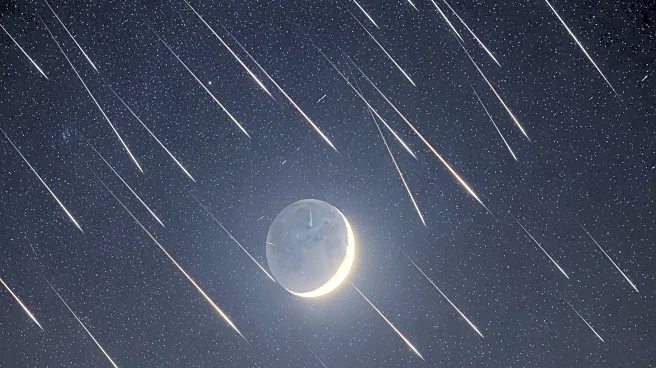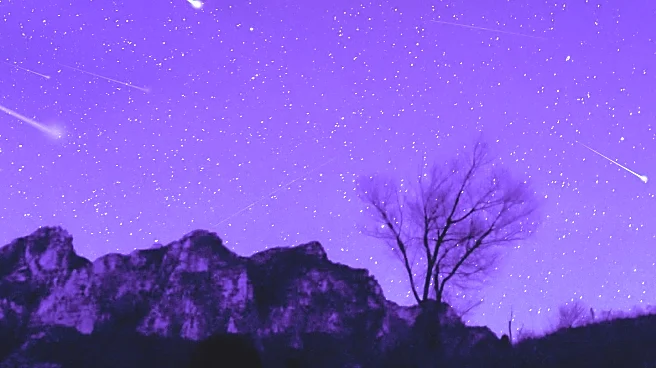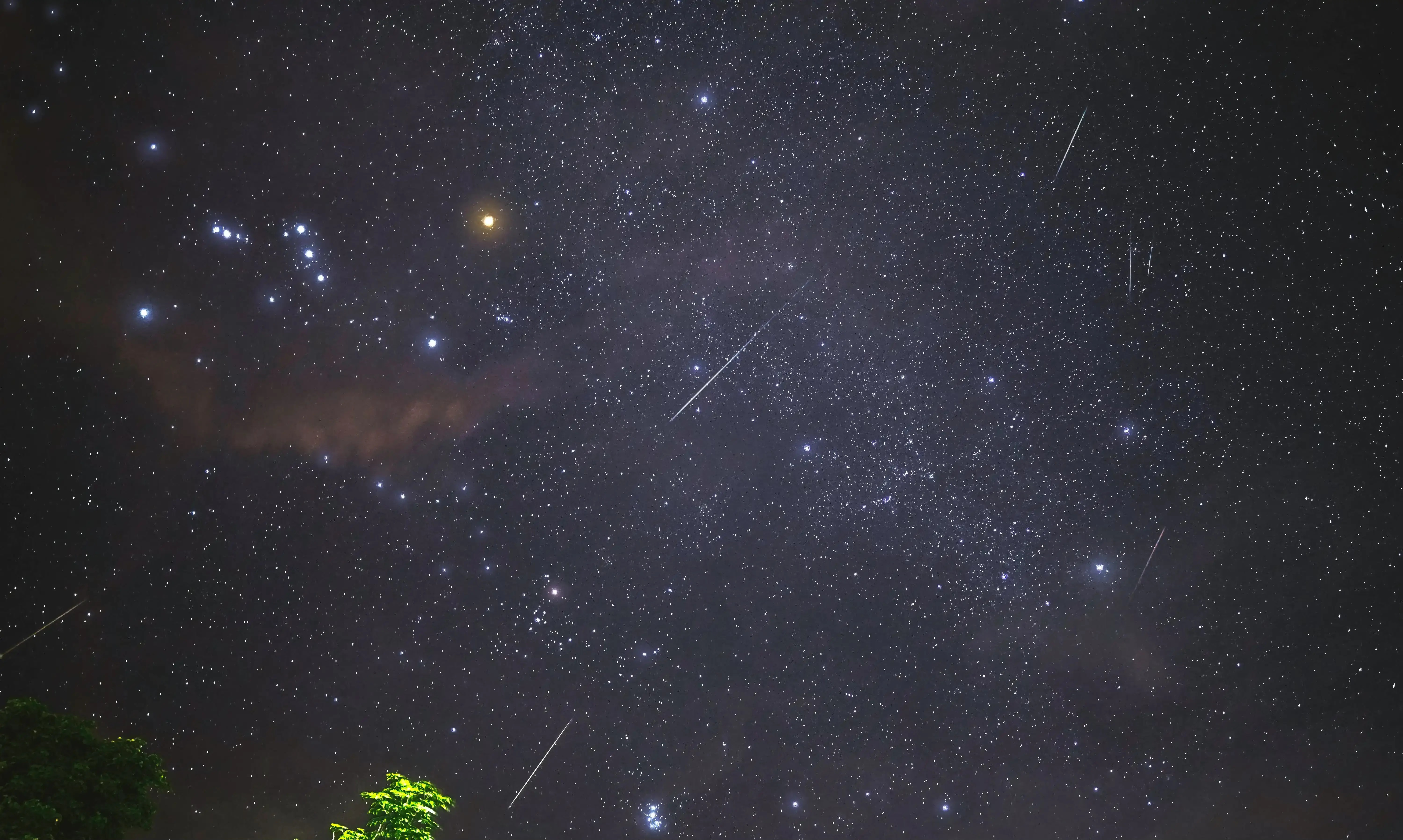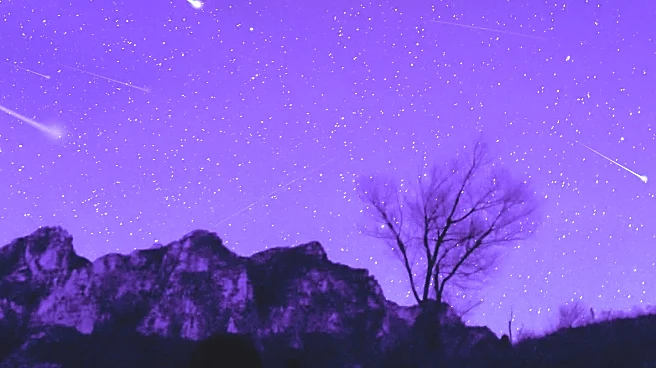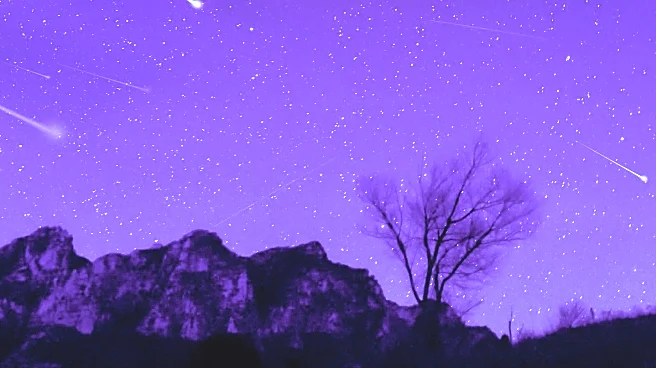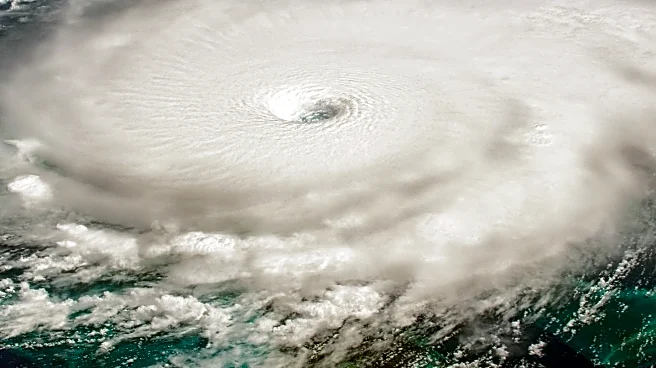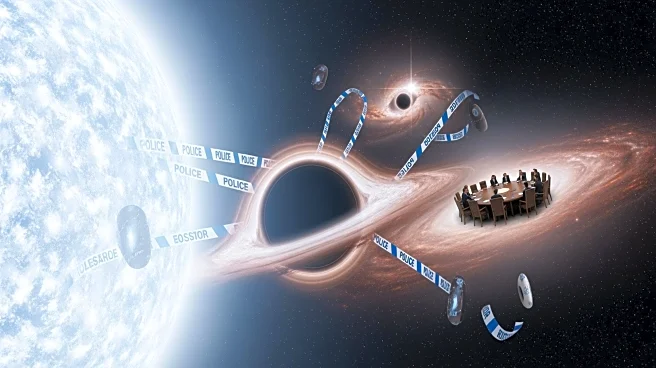What's Happening?
The Orionid meteor shower, active annually from October 2 to November 7, is set to peak between October 21 and 23. Known for its bright and fast meteors, the Orionids can reach speeds of up to 148,000
mph. This year, the peak coincides with a new moon, ensuring optimal viewing conditions with clear, dark skies. The shower is expected to produce at least 20 meteors per hour, providing a spectacular celestial display.
Why It's Important?
Meteor showers like the Orionids offer a unique opportunity for public engagement with astronomy, encouraging people to explore the night sky and learn about celestial phenomena. The Orionids, originating from Halley's Comet, also provide valuable data for scientists studying cometary debris and its interaction with Earth's atmosphere. This event highlights the importance of preserving dark skies for astronomical observations and public enjoyment.
What's Next?
As the Orionid meteor shower peaks, enthusiasts and astronomers across the U.S. will be watching the skies. The event may inspire educational programs and public gatherings focused on astronomy. Observatories and science centers might host viewing events, fostering community interest in space science. Additionally, the data collected during the shower could contribute to ongoing research on cometary debris and atmospheric interactions.


